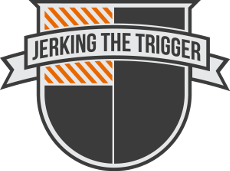
North Branch Knives is a fledgling custom knife company that has been the longtime dream of Ben Wiernusz. Ben and I grew up in north east Pennsylvania, in a small town, right on the North Branch of the Susquehanna River. The river and its surrounding areas not only provide the name of the company, but also the inspiration for the designs of his knives. The river even provides the inspiration for the names of each individual model of knife Ben hopes to offer one day!
Ben and I spent most of our time during high school in the woods or on the river, whether it was small game hunting, camping, or canoeing – if it was outside, we were doing it. Ben’s love of the outdoors and hunting continues to this day and it drives his knife making philosophy. He makes knives that are made to be used as only someone who regularly uses knives can.
The Soloist is his first offering. It was designed from the start to be everything Ben would want in a small, capable, and versatile tool. It must be compact but ready for any task that the soloist canoe camper could throw at it – hence, the Soloist.
Ben is the kind of guy who knows a little about everything and does all things well. He has an eye for the aesthetic and can make just about anything. I have any early prototype of this knife that I still use. It wasn’t everything Ben hoped it would be so he continued to refine it until he arrived at the current design. I know Ben is already working out more ways to further refine this design!
On to the pics!
What does a guy with an eye for the aesthetic and a drive to do things well do when he needs a box for his knives? He makes them himself, by hand!

The boxes are handmade from some kind of attractive waxed cardboard so even the box is tough. You can see the end tag with model name that Ben designed in the previous picture and the logo tag in the next. Ben studied advertising in college so you better believe his knives will be well branded!

Here is what I was greeted with when I opened the box. I was very, very pleased.

Under the knife you can see further evidence of the care that goes into each knife – a certificate explaining more about the model and saying thanks for your purchase. Each knife is also numbered.

The sheath itself is very well made. It is quality full welt construction and hand stitched with the addition of rivets at the stress points. Ben added a simple “N” stamp to the leather for North Branch Knives. The proportions are very nice. It is molded to leave just about half of the handle exposed. The leather has a warm, used feeling that makes it seem like you have already owned this knife forever. The square design of the sheath is not only visually attractive but functional (helps the sheath ride well in a pants pocket). It allows the sheath to be used with either the left or right hand.

Have you ever broken a belt loop on a leather knife sheath? I have. That won’t happen with this sheath. The belt loop is stitched and riveted to the sheath. The loop is large enough for most any belt.

Like I said before, this knife had to be versatile so a spear point blade shape was chosen. The blade is about 3 inches long from tip to scales. It has a convex edge, a long straight area near the handle, a short section with plenty of belly, and still enough of a point to be useful. The point is also positioned in line with the handle to facilitate drilling tasks. This knife would be at home zipping open a white tail or whittling a tent stake.
I provided stabilized Eucalyptus scales for Ben to work with for this project. The knife bares a “1” stamp that corresponds with the number on the certificate that came with the knife. The opposite side bares Ben’s “N” stamp like the sheath.
The biggest clue that you are using a knife that was designed by someone who uses knives comes from the handle. It is shaped well with no guard and a slight finger choil. The choil is not obtrusive enough to force any one grip but serves well to index your hand on the knife. The scales have a relief cut near the blade that allow a pinching kind of grip that is important in some grips like the “chest lever” grip. The handle is long enough for any grip and short enough to keep the knife very compact over all (about 6 3/4″ overall).

I tend to like knives that work and I am generally not willing to pay more for a knife that is beautiful. Ben proves you can have both beauty and function with this knife.

Everything from the handmade box, to the finish on the scales, to the way the white spacers set off the beautiful reddish hues in the Eucalyptus scales, to the warm tones of the leather sheath contribute to feeling that this knife gives you. It is like you have already owned it for years. This knife looks simple and primitive but when you have it in hand, you realize that was all by design. It is all part of the aesthetic as well as the function. You can really see the knife maker’s hand in this knife.
It’s like an old friend.
Specs:
- Steel: 1095
- Blade Length: 3″
- Overall Length: 6 3/4″
- Sheath: Leather, Belt or Pocket Carry
- Scales: Stabilized Eucalyptus
Contact North Branch Knives on BladeForums (username Cheekser).











 Kifaru
Kifaru